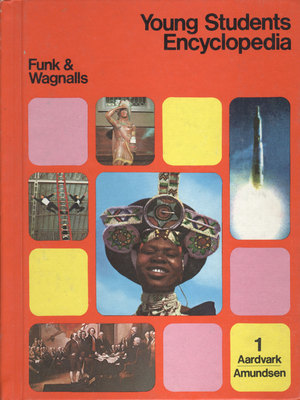 I
didn’t read books as much as I should have. I struggled with
comprehension and retention. There was plenty of Dr. Seus and Mother
Goose around the house, but I preferred our Funk & Wagnalls Young
Students Encyclopedias. That’s where I discovered a multicultural world.
I
didn’t read books as much as I should have. I struggled with
comprehension and retention. There was plenty of Dr. Seus and Mother
Goose around the house, but I preferred our Funk & Wagnalls Young
Students Encyclopedias. That’s where I discovered a multicultural world.
As
a child, I thought the world was white. That’s what my world looked
like growing up in Des Moines, Iowa in the 1960s and 70s. White people,
white books, white movies, white television, white music. Encyclopedias
allowed me to see the world from another vantage point. They revealed a
world made up of color -- brown people of every shade. Maybe that’s why
encyclopedias appealed to me so much.
What is your favorite diverse book that you read recently?
I’m
a little confused about the term ‘diverse book.’ It's one of those
uncomfortable, elephant-in-the-room terms, that used to mean one thing,
but has morphed into something entirely different. It’s an industry code
word whose definition still evolves.
I’ve illustrated
children’s books for nearly 30 years -- trade and educational. When I
entered the business back in the 80s, people used the word ‘diversity’
interchangeably with Black or African-American. When someone said
‘diversity,’ I knew they were talking about me. I was often hired to
illustrate a text because an editor had a ‘diverse,’ ‘multicultural,’
‘African-American’ manuscript. However when I hear the term used today,
it’s more inclusive, as should be. When someone says ‘diverse,’ they
could mean African-American, Hispanic, Asian, Native, LGBT, girls/women,
mixed-race, physically challenged, Buddhist -- or even white. A better
question might be: What is a favorite book that exemplifies diversity?
But even that would be a difficult question because I don’t think
diversity can be about one or two books. It’s about a body of books: Heart & Soul; Diego Riveria; Dreaming Up!; Around our Way on Neighbor’s Day; Alvin Ho; Jingle Dancer. There’s so many.
If you could participate in a story time with any children’s book author or illustrator (alive or dead) who would it be?
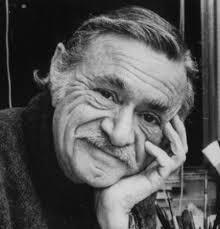 |
| Photo Credit: www.ezra-jack-keats.org |
How do you introduce books featuring characters of color to parents and kids?
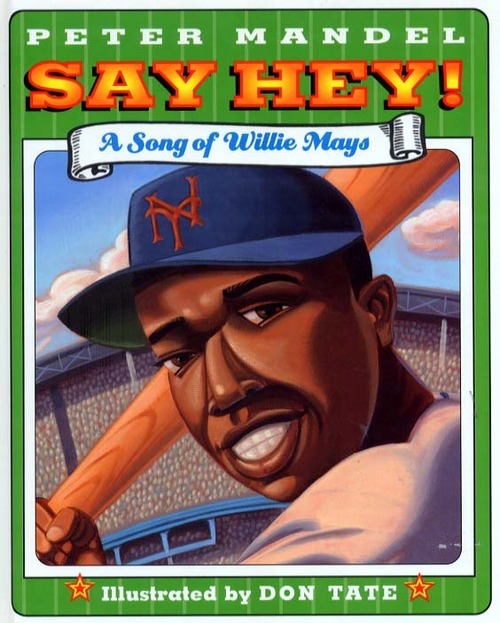 I
introduce my books to kids by visiting schools and participating in
book festivals. I don’t make an issue of race. I tell stories. I draw
pictures. I talk about my books. My brown-face characters speak for
themselves. Children, regardless of race, are open to my books. Parents,
however, can hesitate sometimes. For example, one time at a book event,
a white child strolled up and picked up one of my books. He was with
his parents, who looked a bit uncomfortable with the situation. He
turned to his mother and said, “I want this one,” pointing to my Willie
Mays book. His mother smiled in attempt to hide a struggle going on
inside her head. But soon her feelings were plastered all over her face:
She did not want to buy my book for her kid. After a few seconds of
hem-hawing, she responded, “What about one of those books?” She pointed
to another author who was signing nearby. Then she pointed to another.
Those authors were white. I don’t remember the authors or their books,
but they didn’t feature Black characters. To my amusement, the kid did
not give up. “I want this book,” he said. I fought off a smile. This has
happened more than a few times. I think the more kids-- and parents of
all races -- are exposed to racial diversity in books, the less race
becomes an issue.
I
introduce my books to kids by visiting schools and participating in
book festivals. I don’t make an issue of race. I tell stories. I draw
pictures. I talk about my books. My brown-face characters speak for
themselves. Children, regardless of race, are open to my books. Parents,
however, can hesitate sometimes. For example, one time at a book event,
a white child strolled up and picked up one of my books. He was with
his parents, who looked a bit uncomfortable with the situation. He
turned to his mother and said, “I want this one,” pointing to my Willie
Mays book. His mother smiled in attempt to hide a struggle going on
inside her head. But soon her feelings were plastered all over her face:
She did not want to buy my book for her kid. After a few seconds of
hem-hawing, she responded, “What about one of those books?” She pointed
to another author who was signing nearby. Then she pointed to another.
Those authors were white. I don’t remember the authors or their books,
but they didn’t feature Black characters. To my amusement, the kid did
not give up. “I want this book,” he said. I fought off a smile. This has
happened more than a few times. I think the more kids-- and parents of
all races -- are exposed to racial diversity in books, the less race
becomes an issue.
Authenticity is, of course, key
in multicultural literature, and often times reviewers tend to highlight
perceived inaccuracies. How do you think this affects the publishing
industry’s decision making process in including or excluding characters
and books with diverse and/or multicultural themes?
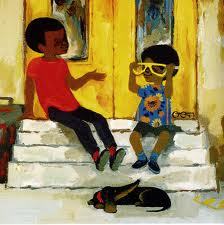 |
| Photo Credit: www.ezra-jack-keats.org |
The
practice of matching a Black author to a manuscript with Black subject
matter creates a niche for Black artists. Filling that niche keeps
manuscripts coming our way, as long as the artwork is quality and
deadlines are met. On the flip side, it can also put us into a box. I
love illustrating books about my people. I am thankful to the editors
and art directors who provide me work. But where are the offers to
illustrate a manuscript with a white protagonist? Will that come along?
Or what about a manuscript featuring a cute dog, funny pig, or
crazed-out carrot? I can do a crazed-out carrot.
How
can we reconcile the prevalence in reviews of readers wanting to like
or sympathize with the protagonist, and our call to write people with
whom they fundamentally differ?
I don’t know if
the publishing industry can reconcile with readers (white readers?) who are less interested in books with protagonists who differ from
them. It’s a free country, you can’t force ‘em to read what they don’t
want to read. But I think if you can reach their children, you can
affect the future.
When children are raised with books
featuring multicultural characters, protagonist who are different from
them are no big deal. As a Black male, I didn’t very often have the
choice between a protagonist who looked or didn’t look like me. If I was
going to read a book, it would likely feature a white protagonist.
Period, like it or not. So today I can read a book like The Marbury Lens and not get tripped up on the race of the character.
As
someone who reads, loves, and often reviews children’s literature,
please provide what you feel are the three most important things to keep
in mind when writing a diverse character or about a different culture?
Be
wary of stereotypes. Check your work by checking with others. I belong
to several writing critique groups. I’m the only person of color within
those groups. When my friends write about other races, I’m careful to
point out stereotypes or things that might be offensive to people of
color. My friends aren’t racists in the least bit, but they’re human.
They have preferences and biases, same as I do. But they’ve probably
never been the victim of racism, and so they just don’t know when the
line has been crossed.
The question of stereotyping can be
fine line to walk, in my opinion. Lets say a white author writes a
story about a Black teen, who lives in an urban neighborhood and likes
to play basketball, is raised by a single mother, whose father is dead
or in prison. Is this stereotypical? Yes, kinda. But is it realistic?
Oh, yes! Should a white author avoid this kind of imagery for fear of
being called out on stereotyping? No, I don’t think so. But I advise
that they check themselves by checking with Black people. And if they
don’t know any Black people, well, there’s where the problem will begin.
If more books were published like Varian Johnson’s My Life As A Rhombus,
books featuring suburban, Black math-whiz teenagers, in homes with two
caring and hardworking parents, the other stuff wouldn’t likely be an
issue anyway. Balance is what’s needed.
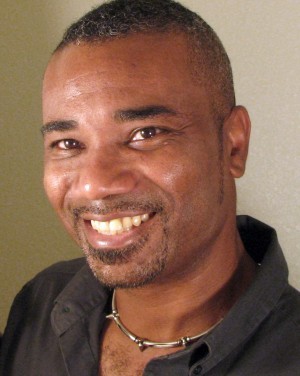
... but until just a few years ago, I thought Ezra Jack Keats was a Black man --- ha-ha-ha!
ReplyDeleteNO, SERIOUSLY. Until college, I did, too. I mean, he had a Biblical name; all the kids I knew with Biblical names were either Mormons or African Americans. I forgot that there are Torah names, too!
I think if you can reach their children, you can affect the future.
YES. And this is why we do this. Excellent interview.
What a great post. Great advice about avoiding stereotypes--advice I pass on to my friends too. I also love Ezra Jack Keats's books.
ReplyDelete'She did not want to buy my book for her kid. After a few seconds of hem-hawing, she responded, “What about one of those books?” She pointed to another author who was signing nearby. Then she pointed to another. Those authors were white.' That blows my mind. So happy to know that the child won out. I hope his mother continued to question herself after they took the book home to read it. *sigh*
ReplyDeleteInterest post. It made me reflect on my childhood. Like most children, parents control what you read. So, books like Charlotte's Web by EB White and Kid Encyclopedia entertained me. They foster knowledge while appealing to the imagination.
ReplyDelete